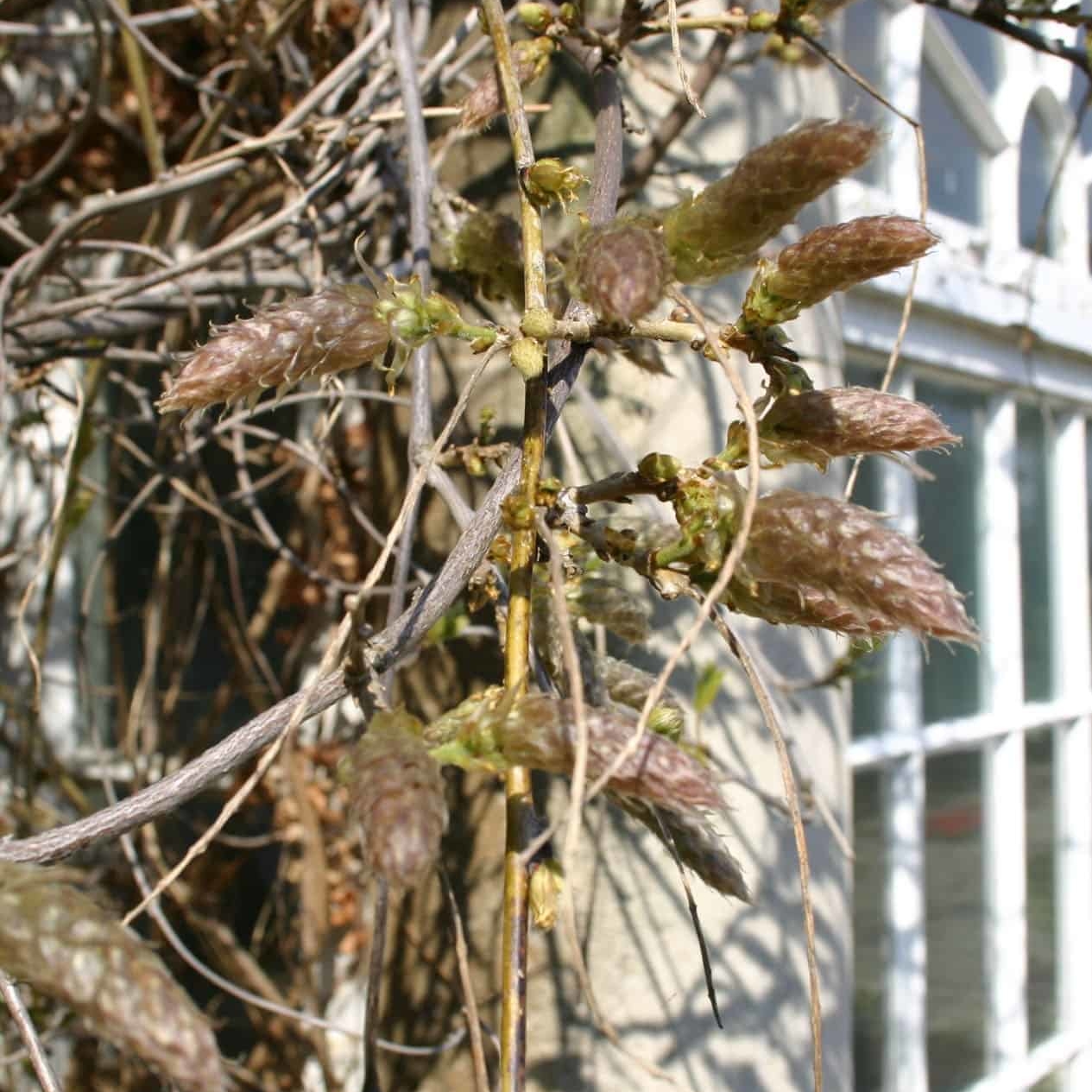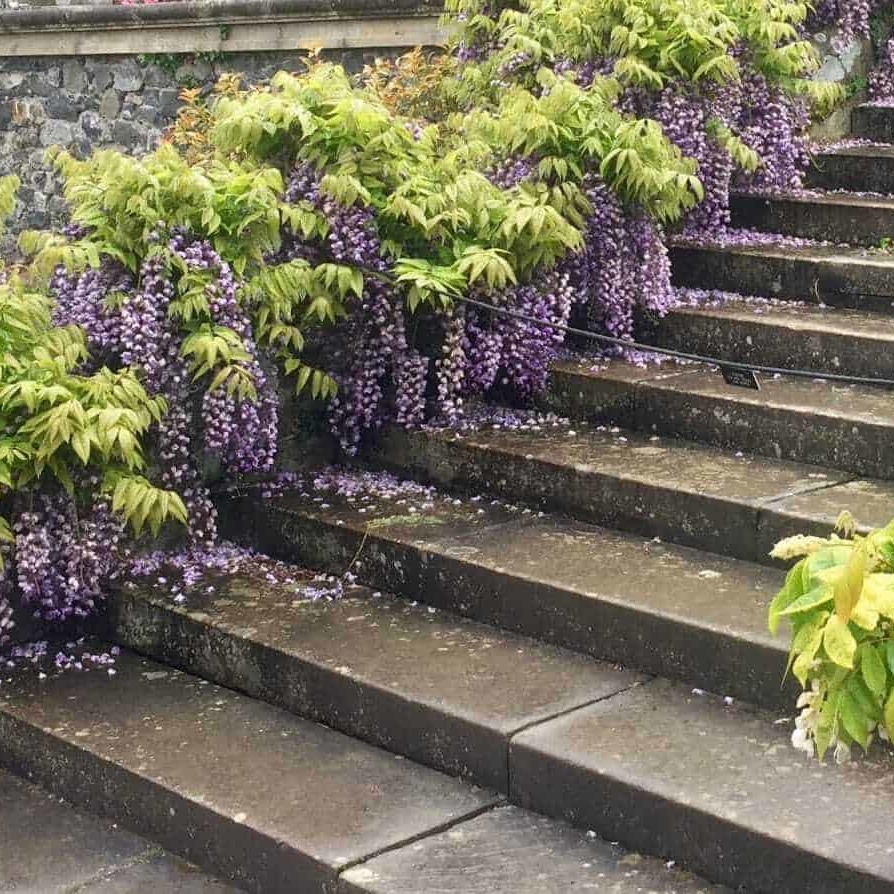How to Grow Wisteria – Your Guide to the BEST Wisteria
Growing Wisteria into a beautiful climber that epitomises Summer means that a well placed Wisteria is a glorious spectacle. The fragrant racemes may only last a few weeks, but it’s fleeting ephemerality is worth it and I think adds to its charm. Wisterias can be grown and used in a variety of ways they can be trained to cover large areas and this could be walls, fences, pergolas and I have even seen them grown through trees. Wisterias grow best in full sun but will tolerate partial shade. The sun helps the wood ripen effectively resulting in good flowering.
Why hasn’t my Wisteria flowered?
One of the most often asked questions is “why hasn’t my wisteria flowered?” This is often for a couple of reasons. Firstly, make sure you buy a grafted plant, because some are seed grown and take many years to flower, and when they eventually do, may only give a poor display. You can check this by looking for a woody scion at the base of the plant or buying a plant in flower then you are assured it will flower strongly every year. The other is Wisterias often need time to establish themselves and you will only get a fabulous display once the framework has been achieved which can take a good few years. Wisterias are hungry plants, so a regular high potash feed will help encourage flowering. A feed such as fish, blood and bone applied in early spring will sustain it and promote flowering.
Choosing your Wisteria
There are three main types of Wisteria these include sinensis, floribunda and brachybotrys. Wisteria sinensis is the Chinese wisteria and its most often the one offered at garden centres. It typically has shorter and thinner racemes than Wisteria floribunda so is ideally suited to training on walls however all can be grown in this way. Wisteria floribunda is the Japanese wisteria and usually have longer, wider racemes these look at their best when grown over a pergola where the racemes will drape downwards creating a graceful effect. Finally, Wisteria brachybotrys are known as the silky wisteria as their foliage has a soft feel to it. This Wisteria has interesting foliage as well as wonderful flowers and is widely grown in Japan particularly in white form.
Once you have a position in mind, select one of the varieties above for your situation and check you like the colour then enrich the planting area with plenty of organic matter such as well rotted manure or garden compost to give it the best start in life. When setting up support for your wisteria the best way of training is with vine eye screws and horizontal wires as it grows you can then tie it to the support. This is the most unobtrusive method and I wouldn’t recommend wooden trellis as the stems will twine behind and look messy, and as they fatten over the years could prise it from the wall.
How to Prune Wisteria
Some people may be under the impression Wisteria is difficult to grow because it needs pruning twice a year, but this just isn’t the case. The pruning is actually very simple and Wisterias are extremely vigorous so it’s unlikely you’ll kill one by pruning it incorrectly. Incorrect pruning will result in a wild tangle of growth and few flowers but this can always be rectified. Wisterias are long lived plants so it’s worth putting the effort into formative pruning at the early stages to avoid issues in the future. Once you’ve achieved a framework you are happy with its very simple.
In summer about two months after flowering cut the long shoots that appear to 5-6 buds or approximately by half. Then in winter around January time shorten the side shoots you summer pruned to 2-3 buds of their base this is where your flowers will appear from in Summer. As the plant ages you may wish to remove 1 or 2 thicker branches and replace it with a younger shoot this is a good idea and helps reinvigorate the plant. Whichever Wisteria you decide to grow I’m certain it won’t disappoint!
First published February 2021 & revised June 2024
Thomas Willey
Thomas joined Bestall & Co in January 2021 after working in a specialist plant centre since leaving school.
He has a passion for plants and a love of the outdoors, and works as part of our planting team with Henry.



